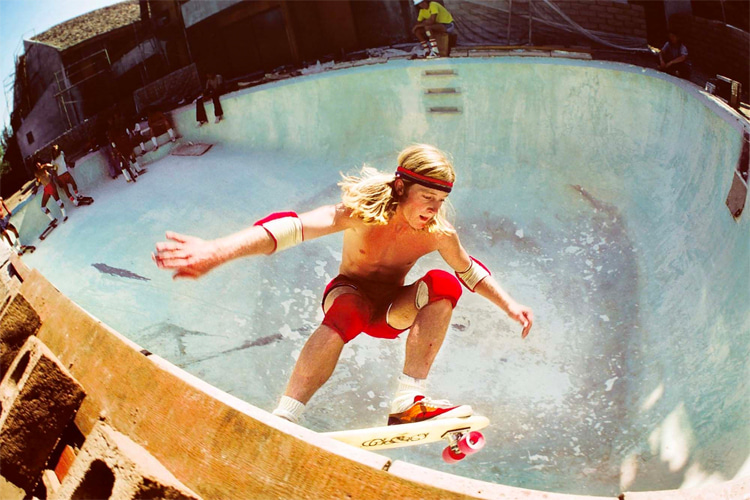Stacy Peralta is one of the most influential skateboarders in the sport's history and a pioneer in creating an iconic, long-lasting skate company.
Peralta took old-school skateboarding into the modern era and helped shape a thriving and sustainable skateboard industry.
Admired by his peers, he was one of the few who managed to make a smooth transition from a professional athlete to a successful entrepreneur.
Powell-Peralta, the company he co-founded, stood the test of time and trends.
Today, it is a well-established brand developing decks, wheels, accessories, and clothing that skaters of all generations learned to respect.
Stacy Douglas Peralta was born on October 15, 1957, in Venice, California.
His mother was Irish and worked as a personnel manager for an oil firm; his father was Mexican and worked as an accountant for a movie studio.
Peralta started surfing and skateboarding at a very young age, and by the time he was 15, he was already one of the stars of the Zephyr Competition Team, also known as the Z-Boys.
"My parents were liberal enough to let me do what I was doing. They figured I was a responsible kid," Peralta once revealed.
"And by giving me that freedom, I didn't want to screw up. So I kept my screw-up stuff to a limit."
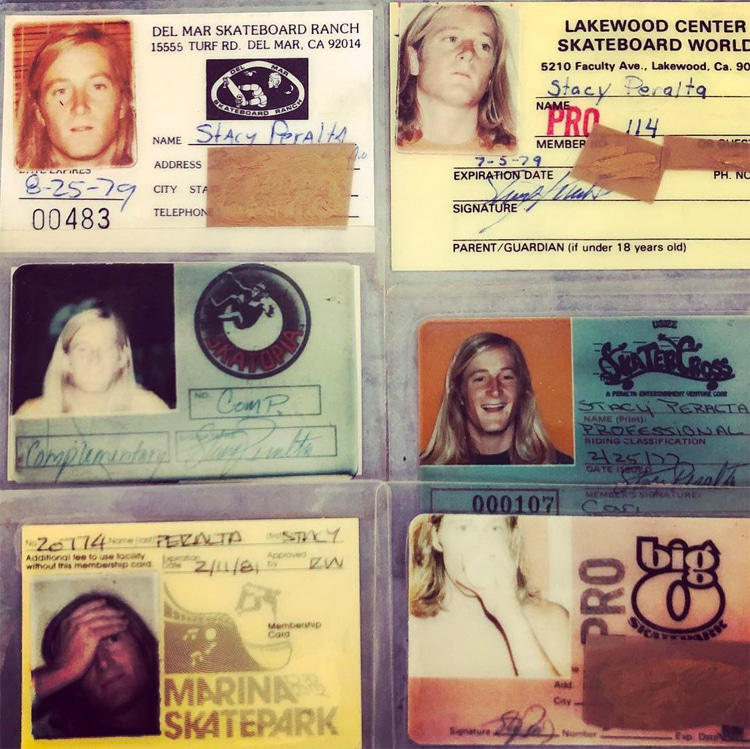
A Prolific Skater With Business Blood
At the iconic Del Mar skate contest, his first competition, the regular footer finished sixth. But he was just taking off.
"I was making more money than my parents at one point. And they were middle-class people, both with jobs," recalls the skater.
"And then I went to tour Europe, got off the plane in England holding my skateboard, and there were photographers at the bottom of the stairs waiting for me."
"I was a 17-year-old kid being treated like a rock star."
"They said: 'Get on your skateboard and ride it.' So, I rode my skateboard down the tarmac and got arrested."
"The next day, my parents opened the LA Times and read that Stacy Peralta had been arrested getting off the plane in England. And that was something that connected with them. They thought, 'This is really something.'"
At 18, the talented sidewalk surfer graduated from Venice High School and was destined to become a professional athlete.
At 19, the blue-eyed Californian was already the number-one skateboarder in the world and someone with a special taste for creating things from scratch.
Stacy is often credited with the invention of the frontside lip-to-fakie.
To improve the performance of the maneuver, he developed the "lapper," a polyethylene device that bolted to the front of the board's rear truck.
By the time he was 20, Stacy was already a well-known skater, doing ads for Pepsi, appearing on the TV series "Charlie's Angels," and avoiding the weed-smoking excesses of many teammates.
But the six-foot-tall skater also knew that his pro career would be over soon, especially after suffering several wrist fractures.
So, it was probably time to maximize his income and plan a long-term strategy within the industry.
Shortly afterward, Peralta left his sponsor, Gordon & Smith (G&S), and teamed up with George Powell to create one of the most recognized skateboarding companies of all time - Powell-Peralta.
Powell was the background master businessman; Peralta was the public face of the brand and had connections in the industry. The duo had a winning formula.
To put things into perspective, before leaving G&S in 1978, the surf skater had sold 110,000 pro model decks and was earning an annual salary of $55,000.
Peralta's Warptail skateboard was one of the most successful models ever produced.
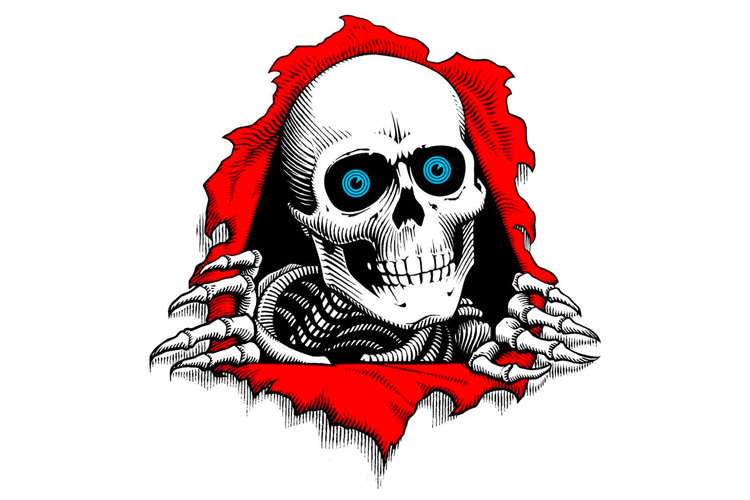
The Bones Brigade Legacy
Backed by his company, Stacy formed the legendary The Bones Brigade, a team of carefully picked skaters who went on to change the sport forever.
For his dream team, Peralta wanted not the best performers but raw talent who could revolutionize skateboarding with creativity and an out-of-the-box approach.
"I wanted to form a great skateboard team," said Peralta in Transworld Business.
"It was something I just felt deep within me that I needed to do. I also wanted to make a product that was a reflection of what I, as a skater, wanted and not what some manufacturer was telling me I wanted."
Peralta was the heart and soul of The Bones Brigade, and image was everything. Skateboarding was evolving fast.
"We were always touching the pavement and feeling your wheels grinding and pivoting around your hands," told Peralta.
But he felt there was more to be made.
The skater-entrepreneur wanted to take his beloved sport into the streets, and so he asked Rodney Mullen to start riding out of the skatepark and bowls.
Peralta himself had ridden over 100 pools over a two-year period.
Initially, Mullen was not entirely convinced but soon became a street skateboarding icon, mainly thanks to his freestyle background.
"There are no more white lines to stay within, sidewalks to conform to or bases to tag," Peralta later stated.
"It's all an open highway with hydrants, curbs, bumpers, shopping carts, door handles, and pedestrians."
Simultaneously, Stacy Peralta started developing a taste for filmmaking and film production.
The world's first skate video, "The Bones Brigade Video Show," co-produced with Craig Stecyk, featured all the stars of tomorrow, including Lance Mountain, Mike McGill, Per Welinder, Rodney Mullen, Steve Caballero, and Tony Hawk.
He continued shooting - Stecyk, his early mentor, had also become his creative partner. And in May/June 1982, Stacey Peralta made the cover of Thrasher magazine.
In 1985, Peralta directed "Future Primitive" and in 1987, he produced "The Search for Animal Chin."
"How come so many top skaters are involved in other artistic fields such as music, painting, drawing, writing, photography, and graphic design? Could it be that skateboarding is an art form?" Stacy questioned in a 1985 Trasher issue.
The magic Powell-Peralta duo split in 1991, and Stacy shifted his interest to film and TV direction and production.
However, the reality was not going to meet Peralta's dreams and expectations, at least exclusively in the media business.
So, he thought of returning to his roots - skateboarding. And, this time, he had to do the right thing.
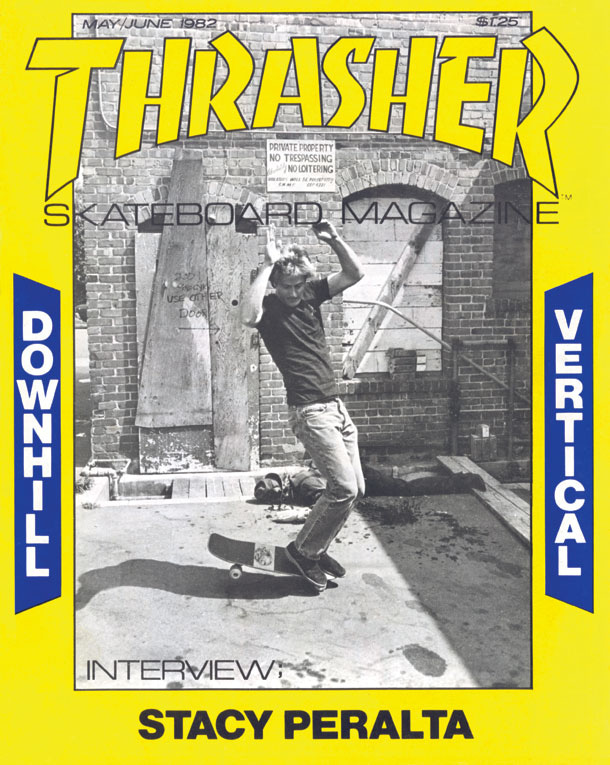
A New Beginning
In 2001, Peralta and Craig Stecik released "Dogtown and Z-Boys," an award-winning documentary on the evolution of skateboarding through the eyes of the Zephyr Competition Team.
The 91-minute film, narrated by Sean Penn, had a budget of $400,000, and one year after its release, it had already made $1.3 million.
Stacy's career had been relaunched.
Peralta was invited to be one of the stars of the 2003 console video game "Tony Hawk's Underground."
In 2004, Stacy also directed a movie that would become a reference for big wave surfers and the tow-in surfing movement: "Riding Giants."
Immediately after, Peralta embraced the biographical drama movie "Lords of Dogtown," a $25 million production focusing on the Dogtown and Z-Boys era.
The 2005 film became a cult classic.
In 2006, Stacy reconnected with his initial company, and the initial Powell-Peralta winning formula was re-established.
In 2012, it was time for "Bones Brigade: An Autobiography."
The documentary showcases interviews with the skate team that boosted the popularity of skateboarding.
Craig Stecyk, Lance Mountain, Rodney Mullen, Stacy Peralta, Steve Caballero, and Tony Hawk reveal how the famous 1980s crew interacted and inspired each other to take the sport to a new level.
Stacy Peralta married Joni Caldwell in 1989. The couple divorced in 1999. They had a son, Austin Peralta (1990-2012).
In 2001, the skater businessman married Gemma Vizor. They had a daughter, Willow Peralta.
American monthly fashion and lifestyle magazine Vogue referred to Stacy's hair as one of the greatest in the history of the sport.
Peralta's net worth is estimated at $10 million.
He is on Facebook (@therealstacyperalta), Instagram (@peraltastacy), and Twitter (@peraltastacy).
Stacy Peralta was inducted into the Skateboarding Hall of Fame in 2010.
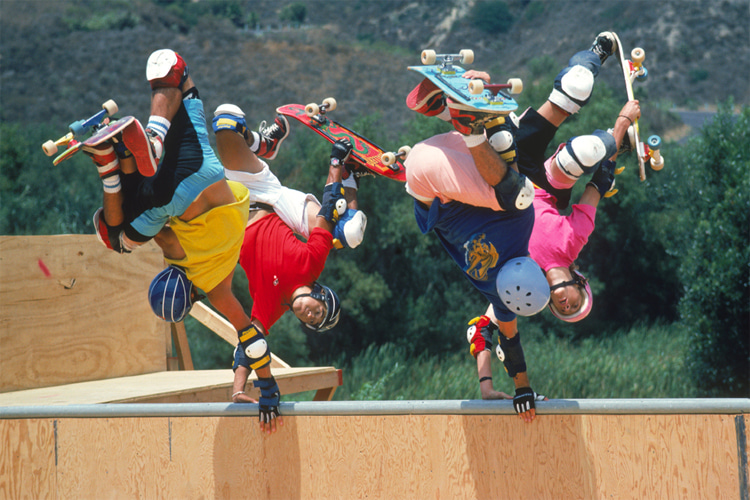
Stacy Peralta | Skateboarding Filmography
- "Freewheelin'" (1976)
- "The Bones Brigade Video Show" (1984)
- "Future Primitive" (1984)
- "The Search for Animal Chin" (1987)
- "Public Domain" (1988)
- "Ban This" (1989)
- "Propaganda" (1990)
- "SK8 TV" (1990)
- "Powell Peralta Eight" (1991)
- "Celebraty Tropical Fish" (1991)
- "Dogtown and Z-Boys" (2001)
- "Lords of Dogtown" (2005)
- "Bones Brigade: An Autobiography" (2012)
